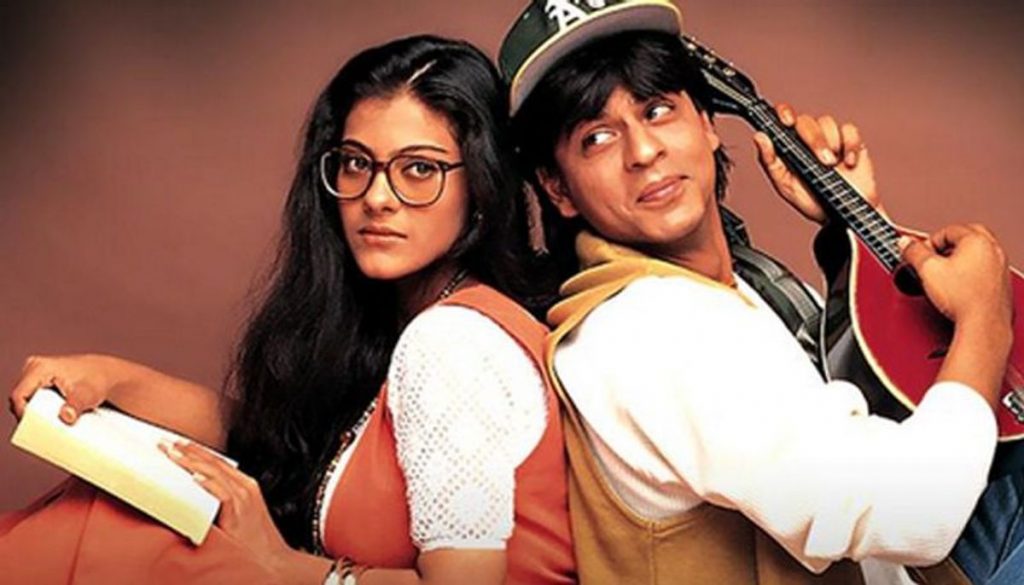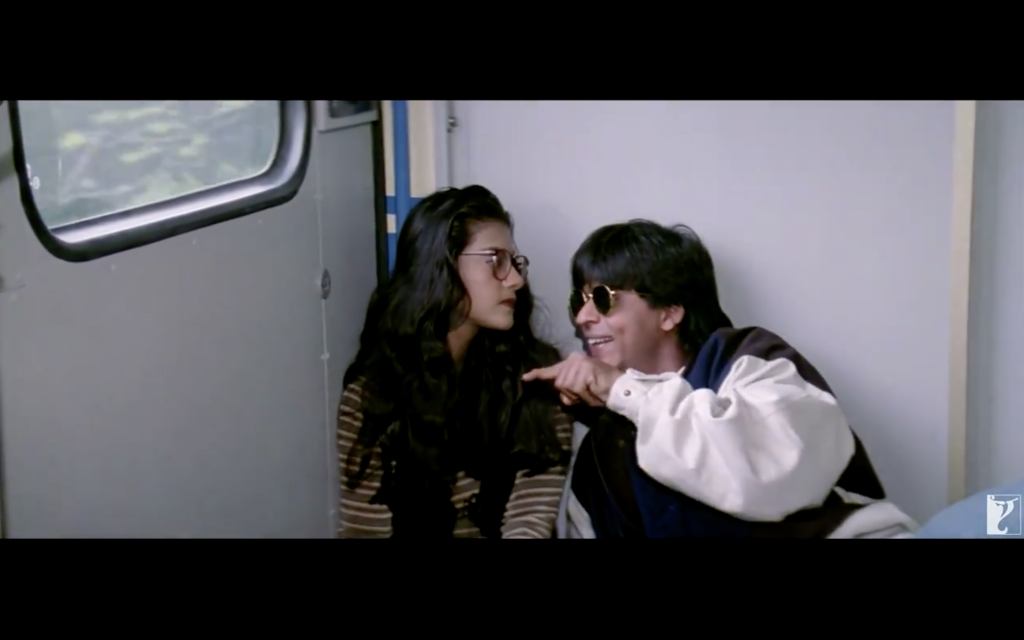By Aditi Shrivastava


DNA India
One of the most iconic movies ever produced by Bollywood has to be ‘Dilwale Dulhaniya Le Jayenge’ backed by the fact that it has been played for approximately 23 years in a theatre in Mumbai. People across generations have grown up watching this romantic tale unfold and since the protagonist of this story is none other than Shah Rukh Khan himself, it comes as no shock that people are influenced by this movie.
However, independent of the sappy dialogues and the pompous music used to decorate the movie, what exactly does the audience garner from this movie? We see two strangers, just wanting a little time away from their families, bumping into each other and coincidently, getting ‘locked’ in a train compartment with each other. At this point Raj begins to violently flirt with Simran, making her increasingly uncomfortable with each passing try. Unsolicited touches, tampering with her luggage, getting into her personal space are only some examples of Raj trying to get her to speak to him. She tries to maintain her calm and tells him to back off, but he does not and persists with increasingly vulgar gestures. At one point he has her bra shoved in her face- a desperate attempt to try to woo her. Let’s break this scenario down, and see what the law says about a man attempting to impress a woman in such a manner.


Twitter/@yrf
Section 354 of the Indian Penal Code (IPC) lays down various sections within which any assault or criminal used towards a woman in an attempt to outrage her modesty are discussed. Section 354A defines sexual harassment as any physical contact and advances which involve unwelcome and explicit sexual overtones. In the aforementioned scenario, Raj comes over very strongly and with obvious sexual advances over Simran. He does not fail to use to his advantage, the fact that they were both trapped in a compartment and that Simran had nowhere else to run. The punishment mandated under this section includes 3 years of rigorous imprisonment along with a hefty fine. However, had Simran completely rejected Raj’s advances and reported him, DDLJ might not have blossomed into the love saga that it is today.
Moving on, the two just ‘happen’ to meet each other at a party and later, at a shop where he causes Simran to miss her train. Giving him the benefit of doubt and glossing over the fact that he was probably stalking her (another offence under Section 354 D, IPC), circumstances require them to spend a night in one small farmhouse bedroom.
When Simran wakes up to find her clothes scattered around the room, she begins to get hysterical over the fact that in her inebriated state, Raj and she may have had sexual intercourse. Though it was a ‘joke’, as Raj clarifies by shouting at Simran for getting agitated, why is ‘joking’ about outraging a woman’s modesty normalised? Sexual intercourse with a woman, in case she is unable to give consent or understand the consequences of such consent because intoxication is considered to be rape. Such has been laid out in Section 375 of the IPC, the punishment for which includes rigorous imprisonment of not less than 10 years and may extend to imprisonment for life. But what are some rape jokes in face of a blissful romance, right?


Free Press Journal
Through all of Raj’s shameful acts for which he should most definitely be behind bars, Simran ends up falling in love with him. A hopeless dynamic established by Bollywood where shameless flirting, continually making a woman uncomfortable would allow a man to get any woman that he wants. Does the narrative set by this movie come into play in our society? This question is answered every time a woman feels uncomfortable climbing into a compartment full of men or every time she is inappropriately touched on the streets or every time she feels a pair of ogling eyes over her and she is filled with fear for her own body.
This romanticisation of sexual crimes by Bollywood to make a successful, romantic story has been and continues to be widely popular. The public devours such content when presented with it and the producers keep giving it to them. Such movies perpetuate the idea that women just have to deal with such attention because only then will they be able to find their ‘true love’. Not only is such a display of unwarranted sexual attention very harmful to a woman on the street, but it also creates a sweet haven for misogyny to thrive. Objectification of women, who seem to have no say in what happens around them, are just objects worthy only of lustful glances. Irrespective of what the law states, building onto the existing patriarchal narrative through such movies is detrimental to the growth of the society.
But what does the law say about the making of such movies? Nothing.
There exists the Indecent Representation of Women’s Act, 1986 which goes into detail about any form of indecent or obscene representation of women in any form of publication but considering the vague terms used therein, implementation of this act is not always successful. Which brings to light another very fundamental problem- what happened to Article 15 and the equality that it promised, irrespective of one’s sex? The continuous portrayal of sexual crimes in movies, despite a censor board in place, has mitigated the importance of such equality. The mere existence of laws like the Indecent Representation of Women’s Act, 1986, which seek to ensure ‘equality’ will not be able to achieve their objectives if there are no authorities which help execute the same. A farce of equality continues to persist in the face of non-performing authorities.
Though we have come a long way from the trying times of women being largely submissive to men, it is important to understand that if such movies continue to portray sexual harassment in a positive light, true progress can never be made. The law will continue to exist, but only in letter. True implementation will remain inconsequential in the eye of a common man.
_________________
Aditi Shrivastava is a student at Kirit P. Mehta School of Law, NMIMS University, Mumbai. Views are personal.


